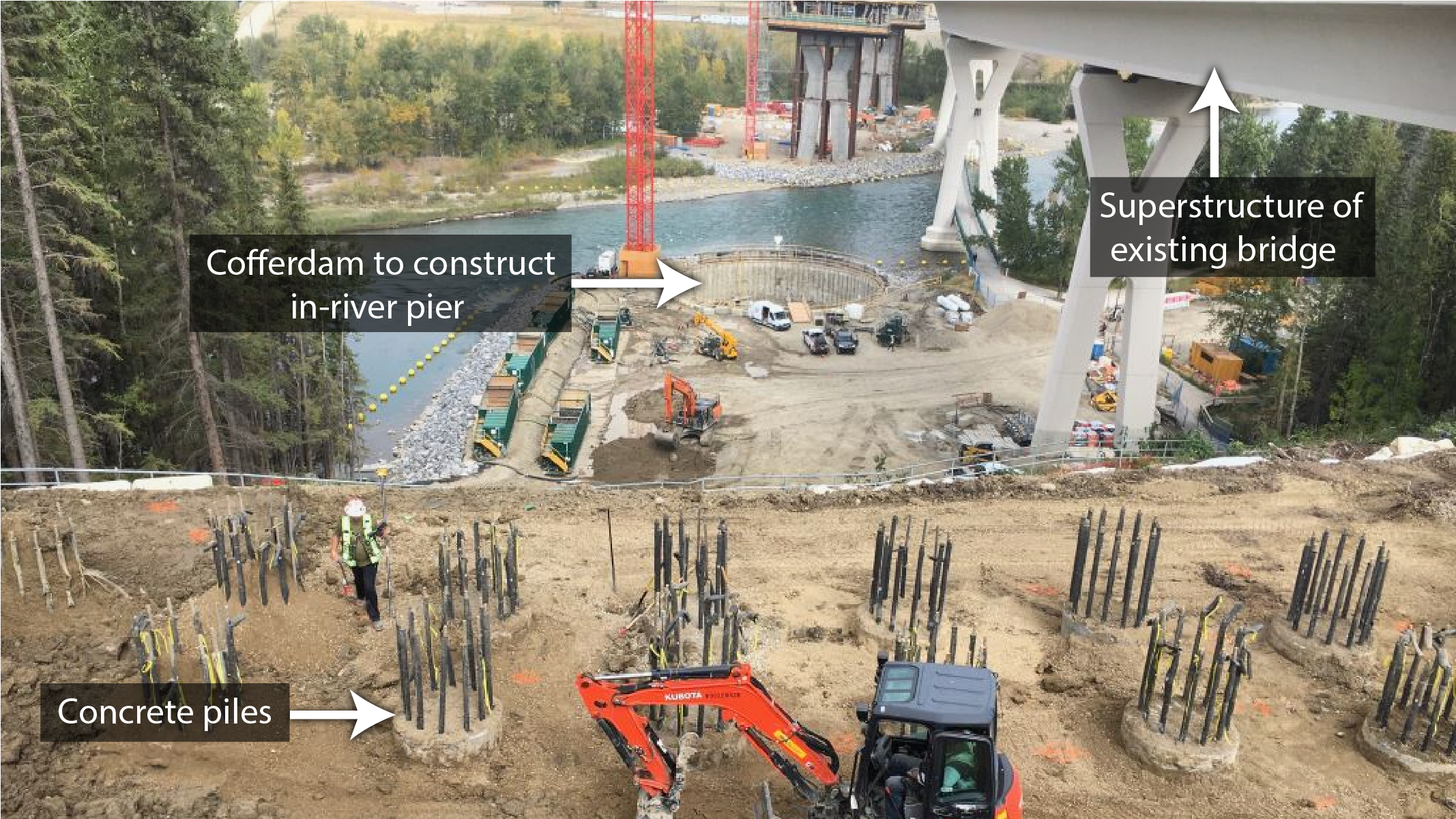Project Update – September 21, 2020
What’s Happening in Traffic This Week
Crestmont Boulevard S.W. (map below) – Single lane alternating traffic remains in effect.
Valley Ridge Boulevard South of Valley Ridge Drive N.W. (map below) – From September 21 to 24, there will be intermittent traffic stoppages lasting approximately five to 10 minutes to shift traffic for paving.
Westbound Trans-Canada Highway Reduced to One Lane (map below)– From 8 a.m. to 3 p.m. on September 22 and 23, the inside lane on westbound Trans-Canada Highway will be closed for approximately one kilometre, just east of Old Banff Coach Road.
Eastbound Trans-Canada HighwayReduced to One Lane (same area as westbound closures above) – From 8 a.m. to 3 p.m. on September 24 and 25, the inside lane on eastbound Trans-Canada Highway will be closed for approximately one kilometre, just east of Old Banff Coach Road.
Canada Olympic Drive S.W. – Remains closed until the end of September, with temporary alternative access available through the east parking lot off Canada Olympic Drive S.W.
All work is weather dependent. Please check 511 Alberta and The City of Calgary’s traffic information map for up-to-date information on traffic detours and speed reductions.
We appreciate your patience during construction.

Sub-structure Construction
Pier Construction
Shedding Some Light

Trans-Canada Highway Detour
Thank you for your patience with the recent lane closures along the Trans-Canada Highway west of Valley Ridge Boulevard N.W. The closures, which will continue this week, are necessary to pave sections of the median to shift traffic onto and off of the detour later this fall.
Reaching New Heights
As the geometry of the North Project continues to take shape, the role and function of the various retaining walls and reinforced soil slopes is becoming easier to see.
The stability of Mechanically Stabilized Earth (MSE) walls comes from the interaction of gravel backfill, the same material that goes under the asphalt in our roads, layered with soil reinforcements. The soil reinforcements are typically strips of steel or geosynthetic material connected to the concrete face plates. Together the soil and straps create the friction and tension needed for the structure to maintain its form.
A reinforced slope is made of compacted fill (soil) layered and faced with geosynthetic material to enhance the stability of the structure. There are several reinforced soil slopes in the southeast corner of the Stoney Trail / Trans-Canada Highway interchange.
So Big They Need a Police Escort
Last week, the biggest girders being used on the North Project started arriving on site. The largest of these girders are 54 metres long, 2.8 metres tall, and weigh nearly 145 tons. That makes them just a little longer than an Olympic swimming pool (50 metres) and close to the same weight as the average 1,600 square foot house (172 tons)!
The turning radius for the trucks transporting the girders is so large that sometimes they have to travel on the wrong side of the road to make the turn. The Edmonton Police Service have been helping with these maneuvers by escorting the trucks from the pre-cast facility through the city until they reach the highway. Given this involved process, the girders have been transported in groups of two or three, approximately every three days, with the final trio scheduled to arrive tomorrow morning.
Soil Nail Wall
The new alignment of Crestmont Boulevard S.W. is cut into the slope on the south side and heads southeast to a new intersection with 109 Street S.W. A soil nail wall is being constructed to stabilize the resulting embankment adjacent to the road.
Mechanically Stabilized Earth (MSE) walls are great in fill situations where the existing grade needs to be raised, but for cut situations like this one where the grade is being lowered, a soil nail wall is the preferred approach.
Steel bars are drilled into the slope (“nailing” the soil) and then the nail holes are filled with cement grout. The strength of the soil nail wall comes from the friction between these nails and the retained soil.
Once the nails have been drilled and grouted, a drainage system is installed within the face (or front) of the wall. A PVC coated steel wire mesh is then attached to the embankment with bearing plates on the steel nail heads.
The last step is to cover the wall with a reinforced erosion control product – similar to the geotextile fabric used on reinforced soil slopes – and seed it for vegetation.
Drainage Swale
The primary purpose of a road drainage system is to remove water from the road and its surroundings. Swales are shallow, broad, vegetated channels designed to collect stormwater run-off from the road, slow its speed to reduce erosion on the surrounding area, and act as a filter to remove pollutants.

And They’re Off!
In the coming weeks you’ll start to see construction getting underway on the final segment of the Calgary Ring Road – the South Project. This is it, the last piece!
At Old Banff Coach Road S.W. crews will be stripping topsoil and gravel immediately south of the road in preparation for detour road construction. At 17 Avenue S.W. they will be excavating dirt east of 101 Street S.W. and building up the grade west of 101 Street S.W. as part of grading for the future bridges.
Residents should expect dust and noise from construction activities and changes to the landscape. We appreciate your patience during construction while we complete the last section of the ring road.






























